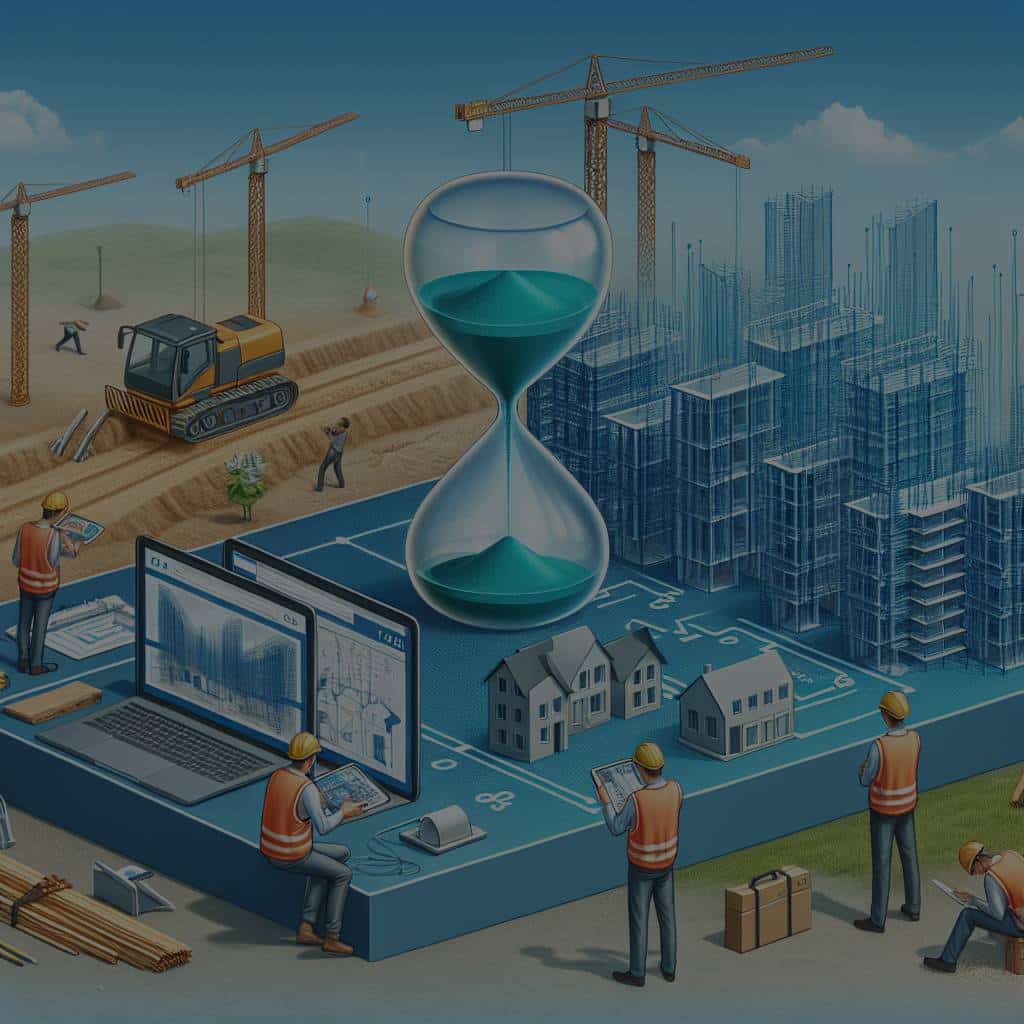What Is the Role of BIM Technology in Reducing Construction Delays in Real Estate Projects?

The world of construction continues to evolve, becoming more complex with every high-rise building or facility that graces our skyline. The intricate dance between design, planning, and building requires careful coordination and management. Enter Building Information Modeling (BIM), a digital tool that has revolutionized the construction industry. BIM technology is an innovative, data-rich process that provides insightful models to aid in successful project completion. BIM’s primary task is to reduce the considerable time and cost associated with construction delays. The technology has been a game-changer for stakeholders, including scholars and professionals in the industry. This article will delve into the integral role BIM plays in reducing construction delays in real estate projects.
BIM: A Closer Look at the Technology Behind the Acronym
Building Information Modeling, more commonly known as BIM, is more than just a digital tool. It’s a process that enhances collaboration between stakeholders in a construction project. It serves as a digital representation of a building’s physical and functional characteristics, using real-time data to facilitate decision-making throughout a building’s lifecycle, from inception to completion. BIM elevates construction projects by providing a comprehensive model that acts as a blueprint, detailing every aspect of a project.
Lire également : What Are the Best Practices in Real Estate for Supporting Work-from-Home Trends?
For the uninitiated, BIM might seem like a concept shrouded in complexity. Yet, at its core, BIM is rooted in simplicity. It’s a technology-enabled process that combines building data with 3D modeling. By synthesizing this information, BIM forms a comprehensive, digitized view of a construction project, allowing stakeholders to plan, design, construct, and manage buildings more effectively.
How BIM Reduces Construction Delays
Delays in construction projects are not only time-consuming but also costly. They can derail a project’s timeline, inflate budgets, and even cause contractual disputes. This is where BIM comes to the rescue. It provides a clear visualization of the project, assisting teams in identifying and mitigating potential issues before they cause delays.
Sujet a lire : How to Navigate Real Estate Investment in Conservation Areas Within the UK?
BIM’s ability to facilitate real-time collaboration is a key feature in preventing project delays. All stakeholders have access to an up-to-date, detailed model of the project. This means that everyone, from architects and engineers to construction managers and owners, can view the same data simultaneously. As such, teams can identify and address issues promptly, significantly reducing the likelihood of unexpected delays.
Moreover, BIM’s intelligent 3D models enable teams to visualize the construction process and detect any potential conflicts before actual construction begins. This process, known as clash detection, can prevent costly interruptions and rework, further minimizing delays.
The Impact of BIM on Project Management
BIM is not just a tool for the design or construction phase; it is a comprehensive solution that impacts the entire project management process. With its accurate 3D models and real-time data, BIM provides a clear understanding of the project’s timeline, resource allocation, and cost estimates.
Project managers can utilize BIM to monitor the project’s progress accurately, identifying any discrepancies between the planned and actual construction timeline. This level of oversight allows for swift response to any issues, preventing delays and ensuring the project stays on track.
Additionally, BIM offers benefits in terms of cost management. By providing detailed information about materials, labor, and other resources, BIM allows project managers to generate precise cost estimates. This level of detail can significantly reduce the risk of budget overruns, a common cause of project delays.
BIM’s Role in the Future of Construction
BIM technology’s impact on the construction industry is far from over. This innovative tool is only beginning to show its potential, with many experts predicting a future where BIM is the standard rather than the exception. As construction projects continue to increase in complexity, the need for a tool like BIM, which can handle vast amounts of data and provide real-time collaboration, only grows.
BIM’s future in construction could see even more advanced functions, such as integration with virtual and augmented reality for immersive project visualization or connections with artificial intelligence for predictive analytics. These potential advancements could take BIM’s ability to prevent construction delays to new heights.
In conclusion, BIM’s role in reducing construction delays in real estate projects is undeniable. By providing a comprehensive view of the project, facilitating collaboration, and aiding in project management, this technology can significantly reduce the time and cost associated with project delays. As the construction industry continues to evolve and projects become more complex, the need for BIM will only increase. Just as the skyscrapers that grace our skyline, the future of BIM technology in construction is looking up.
BIM Software: An Essential Tool for Decision Making
Building Information Modeling or BIM technology is not just a trend, but a critical tool that forms the backbone of decision-making processes in the construction industry. BIM software provides an intuitive platform for architects, engineers, and other stakeholders to interact with building models, thus facilitating more efficient and effective decision making.
BIM software allows for better visualization and understanding of the construction project from the early stages of design through to construction. It provides a 3D model, which can be manipulated and viewed from different perspectives, giving the stakeholders a complete understanding of the project in real time. This is particularly helpful when making decisions about the placement of utilities, selection of materials, and resolving any potential conflicts in the design.
Beyond the design and construction phases, BIM software also supports decision making during the operation and maintenance stages of a facility. For example, BIM can provide detailed information about the building components, such as the type of materials used, their expected lifespan, and maintenance schedules. This information is invaluable for facility managers, helping them to plan and budget for future maintenance and renovation works.
Moreover, one cannot undermine the role of BIM in clash detection. BIM software can automatically detect any ‘clashes’ or conflicts in the design, such as overlapping pipes or ducts, which could lead to serious problems during construction. By identifying these issues ahead of time, BIM facilitates early decision making, thus avoiding costly rework and delays in the construction process.
BIM and Virtual Reality: The Future of Construction Project Visualization
The integration of BIM with other advanced technologies is taking the construction industry to new heights. One such promising area is the combination of BIM and virtual reality (VR). This integration offers immersive experiences, enabling stakeholders to ‘walk’ through the BIM model in a virtual environment.
The use of VR in BIM enhances the visualization of construction projects. It provides a more realistic, detailed, and immersive visualization of the project, which can lead to better understanding and decision making. For instance, before the construction process begins, stakeholders can virtually walk through the building, understanding the spatial relationships and identifying any potential issues.
Moreover, the integration of BIM and VR can also boost client engagement in the construction process. Clients can virtually visit their property during the design and construction phases, providing valuable input and feedback. This level of engagement can increase client satisfaction and trust, ultimately contributing to the project’s success.
In addition, experts predict that the integration of BIM with artificial intelligence (AI) will play a significant role in the future of construction. AI can analyze the vast amounts of data in BIM, providing predictive analytics that can help in foreseeing potential issues and making proactive decisions. This has the potential not only to reduce project delays but also to improve the overall quality and efficiency of construction projects.
In Conclusion: The Indispensable Impact of BIM on Construction
The impact of BIM on the construction industry is profound and far-reaching. From design to construction, operation, and maintenance, BIM technology plays a critical role in facilitating decision making and collaboration, reducing construction delays, and improving the overall efficiency and success of real estate projects.
BIM’s ability to integrate with other advanced technologies like virtual reality and artificial intelligence hints at a future where construction projects are more predictable, efficient, and immersive. As such, the era where BIM becomes a standard tool in all construction projects is not far off.
So, as we look to the skyline, graced with architectural marvels, we must acknowledge the role of BIM in their creation. The future looks bright with BIM technology transforming the way we design, construct, and manage buildings, bringing us closer to a world where construction delays are the exception, not the norm.
